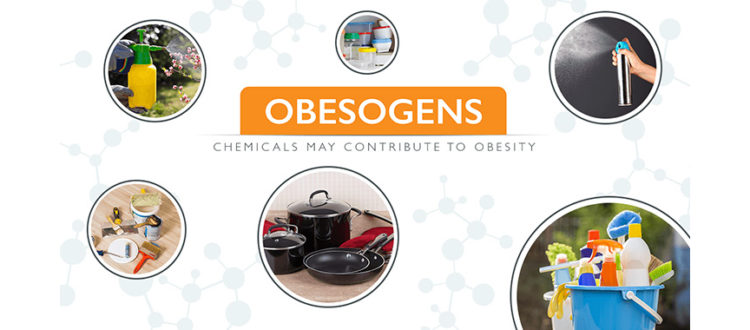- 01 Apr, 2018
- /
- Clearlight Infrared Saunas
- /
- No Comments
Defining Obesogens: Their Impact and Presence in the Household
Obesogens are present in a number of things people touch, use, eat off of and drink out of on a daily basis, all of which have a seriously detrimental effect on the body. These compounds can be blamed for hormonal imbalances, metabolism issues and more.
Obesogens

Post the Infographic on Your Site (Embed Code):
Let’s learn what obesogens are, how they affect our bodies, and where they can be found. Then, you can take educated steps to avoid them!

What are Obesogens?
Obesogens are foreign chemical compounds that can lead to obesity. They generally disrupt normal development, hormonal balances, fat storage, and your metabolism. Obesogenic chemicals can also disrupt energy balance and modify the regulation of appetite and the feeling of being full. This can lead to overeating and, in turn, obesity.
There are both pharmaceutical obesogens and environmental obesogens. Scientists have continued to study the impact of these compounds.
How do Obesogens Impact the Body?
Different obesogens impact the body in a variety of ways, including:
- Increasing the number and/or size of fat cells
- Affecting the body’s regulation of hunger and fullness
- Changing metabolism by storing calories as fat
While the main causes of obesity are still imbalances in energy levels and improper diets, the school of thought surrounding obesogens continues to grow. In addition to the calorie-in-calorie-out equation of weight gain and today’s increasingly unhealthy food choices, the chemicals in your home, work, and the world may have an impact on your weight.
Different Kinds of Obesogens
There are more than 800,000 chemicals in the US, and about 800 of these are identified as endocrine disruptors (chemicals that interfere with the body’s hormone system). Below are the most common obesogenic chemicals that may be found in and around your home:
- Tributyltin (TBT) – TBT is a compound that used to be widely used in marine paints because of its biocide properties, which limits the growth of organisms on a ship’s hull. It has since been banned because it has been shown to harm other marine life, but it can still be found in some household fungicides and disinfectants.
- Phthalates – Phthalates can be found in many plastics and beauty care items, including clay, paint, bottles, makeup, nail polish, hair spray, and many more. Although the dangers of phthalates are becoming more publicized, they can still be found in everyday household items. Lawmakers are trying to force more producers to use non-phthalate plasticizers.
- Organochlorines – Organochlorines have a variety of uses, from pesticides to electronics manufacturing. Simply, they contain at least one chlorine atom and some of these compounds have a profound environmental concern.
- Bisphenol A (BPA) – BPA is used to make many plastics and epoxy resins, and scientists have found it to be a xenoestrogen, meaning that is exhibits estrogen-mimicking, hormone-like properties. This could be one reason why some consider it an obesogen because our hormones play a role in weight regulation.
- Organobromines – Organobromine compounds are often used in flame-retardant products and while some are naturally-occurring, they are mostly synthetic and their safety has fallen under increased scrutiny recently due to their environmental impact.
- Perfluorooctanoic Acid – Perfluorooctanoic acid’s most notable use is serving as the compound on non-stick cookware. It has shown to be a carcinogen and toxicant for both animals and humans. It can also be found in stain-resistant carpet and carpet cleaners, and microwave popcorn bags!

- Organophosphates – Organophosphates are most commonly found in today’s commercial insecticides and herbicides and recent studies suggest a link between this compound and adverse neurobehavioral development in fetuses and children.
- Heavy Metals (Including Cadmium, Arsenic, and Lead) – We’ve long known the danger of metals like arsenic and lead, but often these metals are still used in mining processes, fertilizer, plastics, and wood preservatives.
This is just a short list of the over 800 endocrine disruptors that can lead to obesity. As a responsible parent, homeowner, and citizen of the world, look out for these Obesogenic chemicals and avoid them when possible. To learn more about the significance of obesogenic chemicals, and a multitude of other factors and habits that impact our bodies wellness, download the Total Wellness ebook.
 Canada
Canada Australia
Australia New Zealand
New Zealand Germany
Germany UK
UK EU
EU Ireland
Ireland Malaysia
Malaysia China
China




